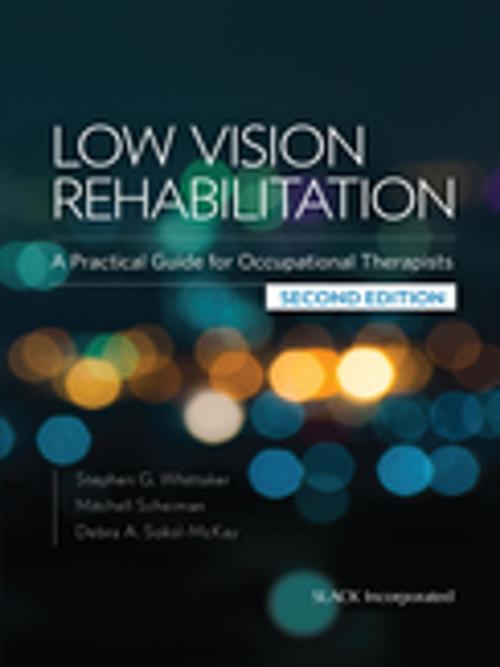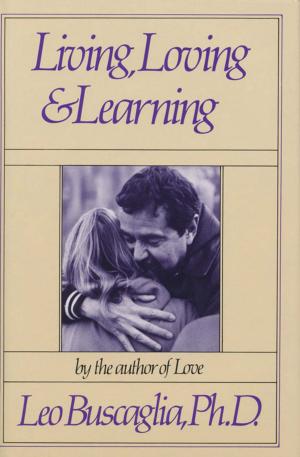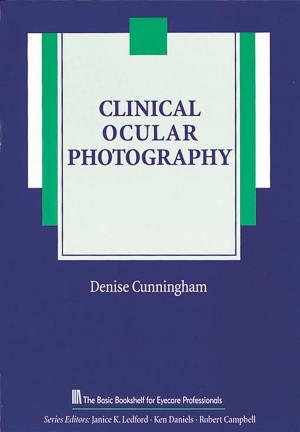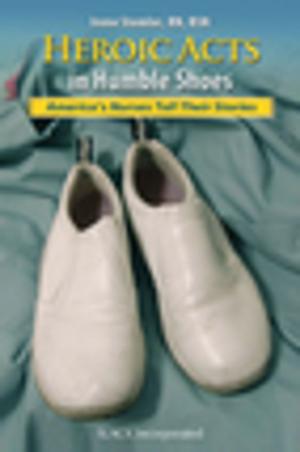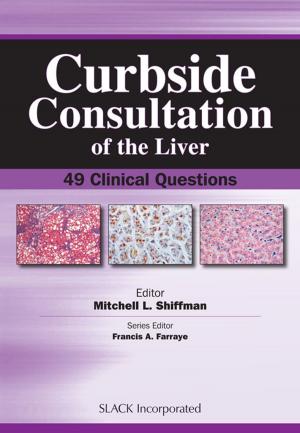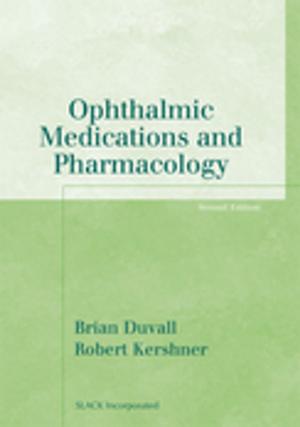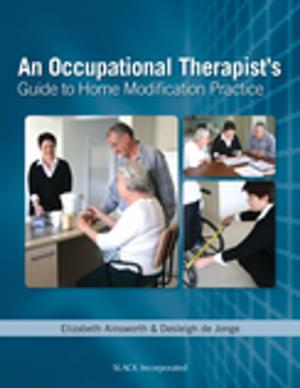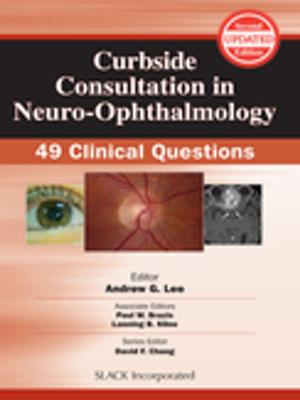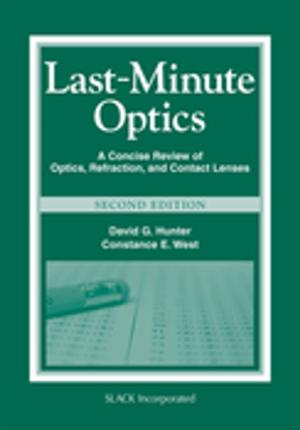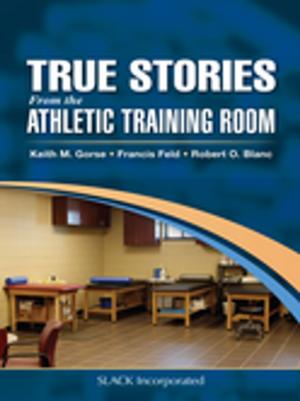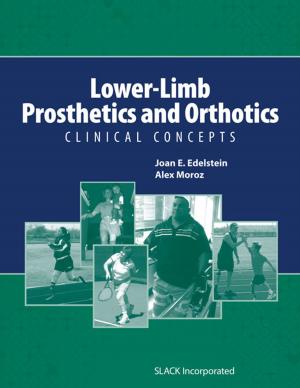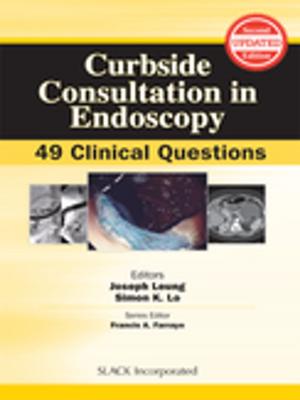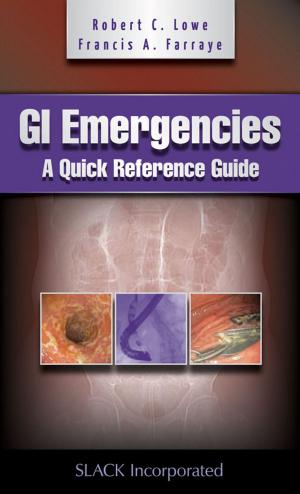Low Vision Rehabilitation
A Practical Guide for Occupational Therapists, Second Edition
Nonfiction, Health & Well Being, Medical, Allied Health Services, Occupational Therapy| Author: | ISBN: | 9781630912345 | |
| Publisher: | SLACK Incorporated | Publication: | July 15, 2015 |
| Imprint: | SLACK Incorporated | Language: | English |
| Author: | |
| ISBN: | 9781630912345 |
| Publisher: | SLACK Incorporated |
| Publication: | July 15, 2015 |
| Imprint: | SLACK Incorporated |
| Language: | English |
This Second Edition of Low Vision Rehabilitation: A Practical Guide for Occupational Therapists provides current, evidence-based information on low vision rehabilitation that contains several new and expanded chapters on ADLs, IADLs, and recreation, as well as new online resources and the latest in accessibility devices. Low vision rehabilitation is rapidly growing as a specialty practice for occupational therapists. This growth requires practical, evidence-based information on the evaluation and treatment of the effects of low vision on occupational performance. Responding to this need, Low Vision Rehabilitation: A Practical Guide for Occupational Therapists, Second Edition blends standards of practice that have been developed for over 50 years by low vision therapists and optometrists, with the latest scientific research and the unique perspective of occupational therapists. This text is written to introduce the student and general practitioner to low vision rehabilitation as commonly encountered in medical rehabilitation as well as provides a conceptual approach to evaluation and treatment that will enrich an advanced practice. Authors Stephen Whittaker, a low vision researcher, certified low vision therapist and occupational therapist, Mitchell Scheiman, an optometrist and researcher, and Debra Sokol-McKay, an occupational therapist with specialty certification in low vision as well as certification as a low vision therapist, vision rehabilitation therapist and diabetes educator, have carefully selected evidence-based evaluations and treatments that focus on clinical practicality and meaningful occupational goals in adults. New to the Second Edition: • A focus on occupational performance using “whatever works,” whether visual, non-visual, or a combination of these different devices and adaptive techniques • The “EPIC” Framework, a general strategy to organize a treatment plan for daily activities using visual and non-visual techniques • Access to a companion website designed as a handy clinical reference, with solutions to clinical problems easily searchable and cross-linked to related content • The “Success-Oriented Approach” to interventions based on the most recent research on cognitive disability and depression associated with low vision • Applications of the latest electronic accessibility devices including smartphones, tablets, and magnifiers that read aloud • Incorporates the AADE™ 7 Self-Care Behavior framework of the American Association of Diabetes Educators • Incorporates concepts from the latest edition of the AOTA Occupational Therapy Practice Framework: Domain and Process • A chapter devoted to field loss, spatial neglect and perceptual impairments resulting from acquired-brain-injury. • The latest in Medicare documentation standards including outcome to G-code conversions and ICD-10 diagnostic coding for low vision. Instructors in educational settings can visit www.efacultylounge.com for additional materials to be used for teaching in the classroom. Features Included: • Recommended practical evaluation and treatment methods such as a 1 hour evaluation protocol, how to write observable and measurable goals and document outcomes, and specific instructions on how to implement treatments • Prepares therapists for the ACVREP certification as a low vision therapist or vision rehabilitation or AOTA specialty certification in low vision • Emphasizes intervention and low vision rehabilitation treatment including: o modification of the environment o adaptive visual and non-visual techniques o selection and use of non-optical assistive devices o selection and use of electronic and optical devices and use of computer technology including smartphones and tablets • Comprehensive case studies on vision impairment resulting from eye disease to head injury and more • Provides valuable information on how to start an independent practice in low vision rehabilitation • Includes a chapter on diabetes management Low Vision Rehabilitation: A Practical Guide for Occupational Therapists, Second Edition employs an interdisciplinary perspective that is unique, practical, and credible and will benefit Occupational Therapy and Occupational Therapy Assistant students, as well as practicing clinicians interested in specializing in low vision or other health care practitioners for patients with vision impairment.
This Second Edition of Low Vision Rehabilitation: A Practical Guide for Occupational Therapists provides current, evidence-based information on low vision rehabilitation that contains several new and expanded chapters on ADLs, IADLs, and recreation, as well as new online resources and the latest in accessibility devices. Low vision rehabilitation is rapidly growing as a specialty practice for occupational therapists. This growth requires practical, evidence-based information on the evaluation and treatment of the effects of low vision on occupational performance. Responding to this need, Low Vision Rehabilitation: A Practical Guide for Occupational Therapists, Second Edition blends standards of practice that have been developed for over 50 years by low vision therapists and optometrists, with the latest scientific research and the unique perspective of occupational therapists. This text is written to introduce the student and general practitioner to low vision rehabilitation as commonly encountered in medical rehabilitation as well as provides a conceptual approach to evaluation and treatment that will enrich an advanced practice. Authors Stephen Whittaker, a low vision researcher, certified low vision therapist and occupational therapist, Mitchell Scheiman, an optometrist and researcher, and Debra Sokol-McKay, an occupational therapist with specialty certification in low vision as well as certification as a low vision therapist, vision rehabilitation therapist and diabetes educator, have carefully selected evidence-based evaluations and treatments that focus on clinical practicality and meaningful occupational goals in adults. New to the Second Edition: • A focus on occupational performance using “whatever works,” whether visual, non-visual, or a combination of these different devices and adaptive techniques • The “EPIC” Framework, a general strategy to organize a treatment plan for daily activities using visual and non-visual techniques • Access to a companion website designed as a handy clinical reference, with solutions to clinical problems easily searchable and cross-linked to related content • The “Success-Oriented Approach” to interventions based on the most recent research on cognitive disability and depression associated with low vision • Applications of the latest electronic accessibility devices including smartphones, tablets, and magnifiers that read aloud • Incorporates the AADE™ 7 Self-Care Behavior framework of the American Association of Diabetes Educators • Incorporates concepts from the latest edition of the AOTA Occupational Therapy Practice Framework: Domain and Process • A chapter devoted to field loss, spatial neglect and perceptual impairments resulting from acquired-brain-injury. • The latest in Medicare documentation standards including outcome to G-code conversions and ICD-10 diagnostic coding for low vision. Instructors in educational settings can visit www.efacultylounge.com for additional materials to be used for teaching in the classroom. Features Included: • Recommended practical evaluation and treatment methods such as a 1 hour evaluation protocol, how to write observable and measurable goals and document outcomes, and specific instructions on how to implement treatments • Prepares therapists for the ACVREP certification as a low vision therapist or vision rehabilitation or AOTA specialty certification in low vision • Emphasizes intervention and low vision rehabilitation treatment including: o modification of the environment o adaptive visual and non-visual techniques o selection and use of non-optical assistive devices o selection and use of electronic and optical devices and use of computer technology including smartphones and tablets • Comprehensive case studies on vision impairment resulting from eye disease to head injury and more • Provides valuable information on how to start an independent practice in low vision rehabilitation • Includes a chapter on diabetes management Low Vision Rehabilitation: A Practical Guide for Occupational Therapists, Second Edition employs an interdisciplinary perspective that is unique, practical, and credible and will benefit Occupational Therapy and Occupational Therapy Assistant students, as well as practicing clinicians interested in specializing in low vision or other health care practitioners for patients with vision impairment.
